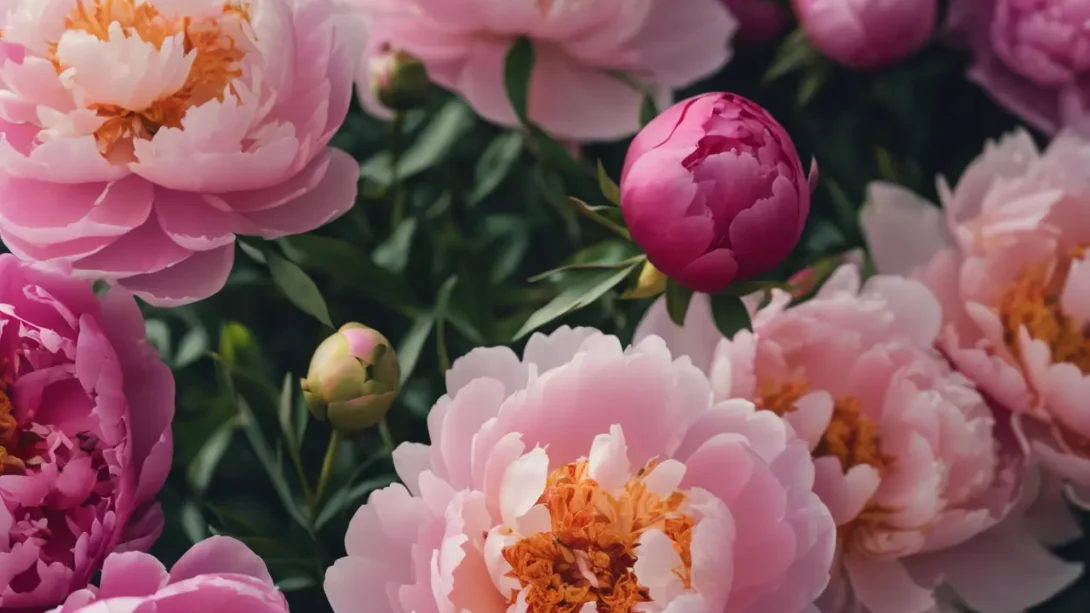Peonies, with their lush, full blooms and rich colors, stand as a symbol of beauty and prosperity in gardens and floral arrangements worldwide. These perennial flowers have captivated the hearts of gardeners and floral enthusiasts for centuries, not only for their stunning appearance but also for their fragrance and the sense of elegance they bring to any setting. However, behind their exquisite beauty lies a common perception: peonies are often considered an expensive choice. This article delves into the various factors that contribute to the cost of peonies, exploring whether this perception holds true and what makes these blooms a prized possession for many.
Peonies
Peonies are distinguished by their large, often fragrant flowers, which come in a range of colors from pure white to deep red, including pink, yellow, and sometimes multi-colors. There are three main types of peonies: herbaceous peonies, which die back to the ground each winter; tree peonies, which are woody shrubs that do not die back; and Itoh peonies, a hybrid cross between herbaceous and tree peonies, offering the best of both worlds with strong stems and large flowers.
Growing peonies requires patience and commitment, as these plants thrive in cool climates and require a period of winter chilling to bloom. They prefer well-drained soil and a sunny to partly shaded location in the garden. Once established, peonies can live for decades, even generations, making them a long-term investment in the landscape. The blooming season of peonies is relatively short, typically in late spring to early summer, depending on the variety and location. This fleeting availability adds to their allure and perceived value.
Factors Influencing the Cost of Peonies
Cultivation and Care
The cultivation of peonies involves a considerable investment of time and resources. These perennials take several years to mature and produce their signature large blooms, with some varieties requiring up to three to five years from planting to reach full flowering potential. The meticulous care needed during this period, including proper soil preparation, watering, and protection from pests and diseases, contributes to the overall cost of peonies.
Seasonality and Availability
The limited blooming season of peonies directly impacts their availability and price, especially for cut flowers. Fresh peony blooms are highly sought after for weddings and special events in late spring and early summer, leading to a spike in demand and, consequently, price. Outside of their natural blooming season, peonies must be sourced from regions with differing climates or even imported, further increasing costs.
Longevity and Durability
Peonies are cherished not only for their beauty but also for their longevity as cut flowers. A bouquet of peonies can last up to a week or more with proper care, making them a desirable choice for events and home decor. This durability, combined with their seasonal availability, plays a significant role in establishing their market value.
Comparing Peony Prices
The cost of peonies can vary significantly depending on several factors, including the type, size, and maturity of the plant, as well as the time of year. Herbaceous peonies, known for their traditional bush form and ease of care, are often less expensive than their tree and Itoh counterparts. Tree peonies, with their woody structure and perennial growth, command higher prices due to their longer lifespan and the unique, larger flowers they produce. Itoh peonies, being hybrids that combine the best traits of herbaceous and tree peonies, are prized for their spectacular blooms and robustness, often fetching the highest prices among the three types.
When purchasing peony plants, the maturity of the plant also influences the price. Bare root peonies, which are dormant plants sold without soil, are the most cost-effective option. These require several years of growth before they start blooming profusely. On the other hand, young potted plants or mature peony bushes that are already blooming are more expensive, reflecting the time and care invested in bringing them to a mature flowering stage.
The timing of purchase can also affect the cost of peonies, especially cut flowers. Prices tend to be higher during peak demand seasons, such as the weeks leading up to Mother’s Day and throughout the wedding season in late spring and early summer. Conversely, purchasing peony plants for the garden during the off-season, like late summer or early fall, can lead to better deals as nurseries clear out inventory before winter.
Ways to Obtain Peonies Cost-Effectively
Despite their reputation for being expensive, there are strategies to enjoy peonies without breaking the bank. One of the most rewarding and cost-effective methods is to grow peonies from seeds or bare roots. Starting peonies from seeds is a long process, with flowers often not appearing for several years, but it offers a more affordable way to cultivate these beautiful plants in your garden. Bare root peonies are a slightly more expensive but faster option, with the potential for blooms within a few years of planting.
Local nurseries and garden centers can be excellent sources for finding peonies at a reasonable price, especially if you’re looking for young plants or bare roots. Additionally, plant swaps and gardening clubs are great places to obtain peonies, as many gardeners are willing to share divisions of their mature plants. This not only reduces costs but also allows for the exchange of different varieties and cultivars.
Timing your purchase can also lead to savings. Buying peony plants late in the blooming season or during end-of-season sales can provide significant discounts. For cut peonies, consider choosing varieties that bloom earlier or later in the season when demand is lower, or opt for locally grown flowers to avoid the premium associated with imported blooms.
Conclusion
The allure of peonies, with their sumptuous blooms and enchanting fragrances, is undeniable. While the initial perception may be that these flowers come with a hefty price tag, understanding the factors that contribute to their cost—such as cultivation demands, seasonality, and their prized status in floral arrangements—provides a clearer picture of their value. Peonies are not just plants but are long-term investments in beauty and joy for your garden or home.
The price of peonies can vary widely, influenced by the type of peony, the maturity of the plant, and the timing of the purchase. Herbaceous, tree, and Itoh peonies each offer distinct characteristics and benefits, with prices reflecting the care and time required to grow these magnificent blooms. However, the investment in a peony plant can yield decades of beautiful flowers, making it a worthwhile endeavor for many gardeners and floral enthusiasts.
For those looking to incorporate peonies into their gardens or floral designs cost-effectively, several strategies can be employed. Growing peonies from seeds or bare roots presents an affordable option, although it requires patience and time. Seeking out plants during off-peak seasons or participating in plant swaps can also provide opportunities to acquire peonies at a lower cost. Regardless of the approach, the joy of nurturing these plants and witnessing their stunning blooms year after year can be immensely rewarding.
In conclusion, while peonies may be perceived as expensive, their lasting beauty, the pleasure they bring, and the potential for decades of blooms make them a valuable addition to any garden. By understanding the factors that influence their cost and exploring cost-effective methods of acquisition, gardeners and floral enthusiasts can enjoy the elegance of peonies without overspending. Whether as a focal point in the garden, a cherished part of a wedding bouquet, or a stunning arrangement in the home, peonies continue to be a beloved choice for those who appreciate their timeless beauty and elegance.



